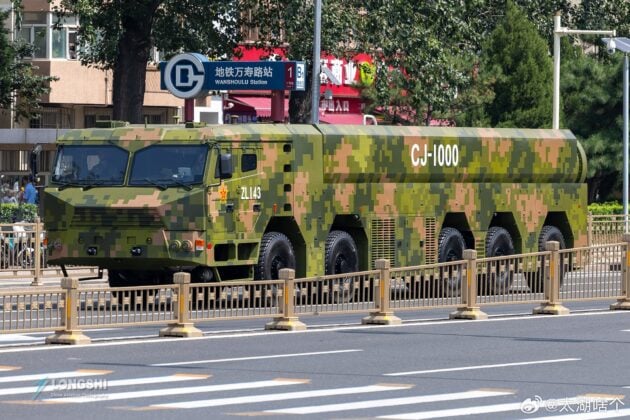
China has displayed a new long-range hypersonic cruise missile for the first time, unveiling the Changjian-1000, or CJ-1000, during a major military parade in Beijing.
The weapon represents a new class of precision-strike capability for the People’s Liberation Army Rocket Force, designed to penetrate advanced air defense systems.
The CJ-1000 is a successor to the DF-100 cruise missile and is reported to be China’s first scramjet-powered hypersonic cruise missile. The system has an estimated range of 6,000 kilometers, enabling it to threaten critical military targets deep within an adversary’s territory.
As a hypersonic weapon, the CJ-1000 is engineered for high maneuverability and flies at speeds that make it difficult for current missile defense technologies to intercept. The missile’s stated characteristics include strong penetration capabilities and the ability to be launched rapidly, allowing for timely strikes against high-value assets on land and at sea. Its primary mission is understood to be the engagement of key nodes in an opponent’s defense network.
Unlike a traditional ballistic missile that follows a largely predictable trajectory, a hypersonic cruise missile travels at extreme speeds within the atmosphere and can change course during flight. This combination of speed and maneuverability presents a difficult challenge for radar tracking and defensive systems, a fact of increasing concern for U.S. military planners.
The introduction of this operational hypersonic cruise missile could alter the strategic environment in the region, placing new pressure on the United States and its allies to develop more advanced early-warning and counter-hypersonic defense systems. The weapon’s unveiling underscores a clear direction in China’s military modernization toward developing advanced, high-speed strike platforms.